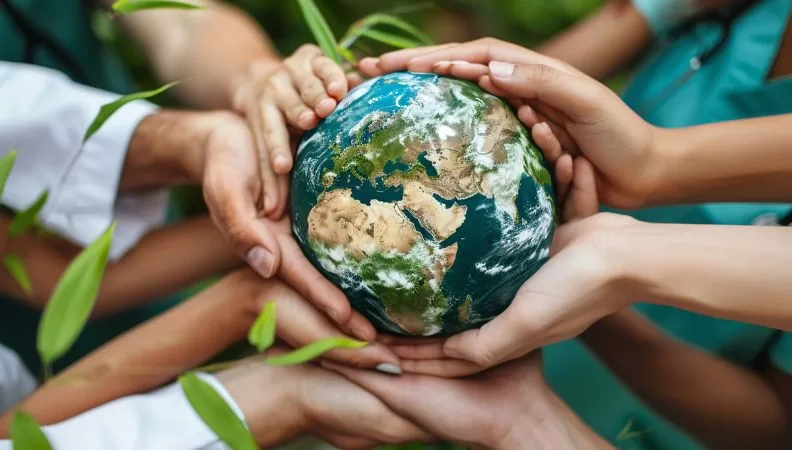WHO’s $1.5 Billion Plan to Address Global Health Crises and Save Lives.
The World Health Organization’s (WHO) $1.5 billion initiative, known as WHO’s $1.5 Billion Plan, is a historic effort aimed at addressing the most urgent global health crises and saving millions of lives. This groundbreaking investment represents a significant leap forward in combating diseases, reinforcing healthcare systems, and improving global health outcomes. In light of the current critical health challenges—such as epidemics, vaccination, and healthcare infrastructure—WHO’s $1.5 Billion Plan will reshape the global response to health emergencies, setting new standards for international collaboration.
What is WHO’s $1.5 Billion Plan?
WHO’s $1.5 billion plan is aimed at addressing the most pressing health issues around the globe. From the swift response to diseases such as COVID-19 to the prevention and treatment of diseases such as malaria, tuberculosis, and HIV/AIDS, this effort will provide funding for some of the most important global health initiatives. The aim is not only to deal with current health emergencies but to develop health system resilience throughout developing countries, making countries able to better respond to future emergencies.
Why is WHO’s Investment Important for Global Health?
The global health community has been challenged in the past decades by infectious diseases due to the lack of adequate healthcare infrastructure in many low-income nations. WHO’s financing is critical in that it offers immediate assistance as well as longer-term solutions for addressing health inequities. By giving those countries most vulnerable to health crises access to the means and resources needed by so afford, WHO is strengthening global health security and increasing access to health, which is key to keeping health crises from spreading.
Key Areas of Focus: Diseases, Outbreaks, and Healthcare Infrastructure
This substantial $1.5 billion plan aims in part to stop epidemic outbreaks that are likely to get out of hand in a poorly funded healthcare system. Including work to prevent the spread of diseases such as Ebola, malaria, and coronavirus disease 2019 (COVID-19). Additionally, the plan will support strengthening healthcare infrastructure, making it easier for countries to diagnose, treat, and prevent diseases. The thorough nature of the plan seeks to have both short-term and long-term health consequences covered.
How Will the $1.5 Billion Be Spent?
WHO has specified some major directions for allocating the $1.5 billion. They will allocate part of the funding to vaccine distribution programs, especially in countries with less access to immunization. A crucial use of the funds is safeguarding against disease outbreaks, alongside providing emergency medical supplies and personnel in hotspots. Simultaneously, resources will strengthen national health systems, ensuring better preparedness for future health crises.
The Role of International Partnerships in the Plan’s Success
Although it is a big amount of money, i.e., $1.5 billion, it is not by itself. WHO emphasizes global partnerships, relying on collaboration with governments, NGOs, and industry. Together, these stakeholders can ensure resources are effectively distributed, reaching even the most marginalized communities.
Expected Outcomes: What Will Success Look Like?
Achieving success in the implementation of WHO’s $1.5 billion initiative would lead to reduced numbers of outbreaks of diseases, enhanced healthcare systems, and better health outcomes in developing nations. It also would mean more availability of lifesaving drugs and vaccines to marginalized groups. In the long term, we anticipate that the plan will help achieve a world free from diseases such as polio and malaria, towards a stronger and healthier global community.
Challenges in Implementing WHO’s Global Health Plan
Certainly, the task of carrying out such a grand plan is not without its difficulties. Nations with weak infrastructure, political disruption, and logistical constraints could experience difficulty in the successful implementation of the plan. Sustained funding and fair resource distribution are vital for the long-term success of WHO’s $1.5 billion plan. Despite challenges, this initiative offers hope for addressing some of the world’s most pressing health emergencies effectively.
WHO’s Plan and Its Impact on the Future of Global Health
WHO’s plan sets a new benchmark for global collaboration on health emergencies, shaping future crisis management and boosting health infrastructure. Over the long term WHO’s plan is $1.5 billion) may help to achieve more sustainable and equitable global health systems.
The Usages of Citizens and Governments for Enforcing the WHO Plan.
Governments, citizens, and organizations around the world can all make a key contribution to the realization of WHO’s $1.5 billion plan. There is potential for governments to increase funding and enact policies that foster global health initiatives. Citizens also can contribute by raising public awareness of the plan and backing initiatives to strengthen global health. Together, these efforts will contribute to the eradication of health crises and the saving of millions of lives globally.
Conclusion
WHO’s $1.5 billion strategy is a bold effort to tackle global health emergencies and enhance healthcare systems worldwide. By investing in disease prevention, emergency response, and health infrastructure, WHO aims to build a safer, healthier future. This initiative lays the groundwork for broader collaboration in global health. Together, we can support this mission and make a lasting difference in the well-being of communities everywhere.



